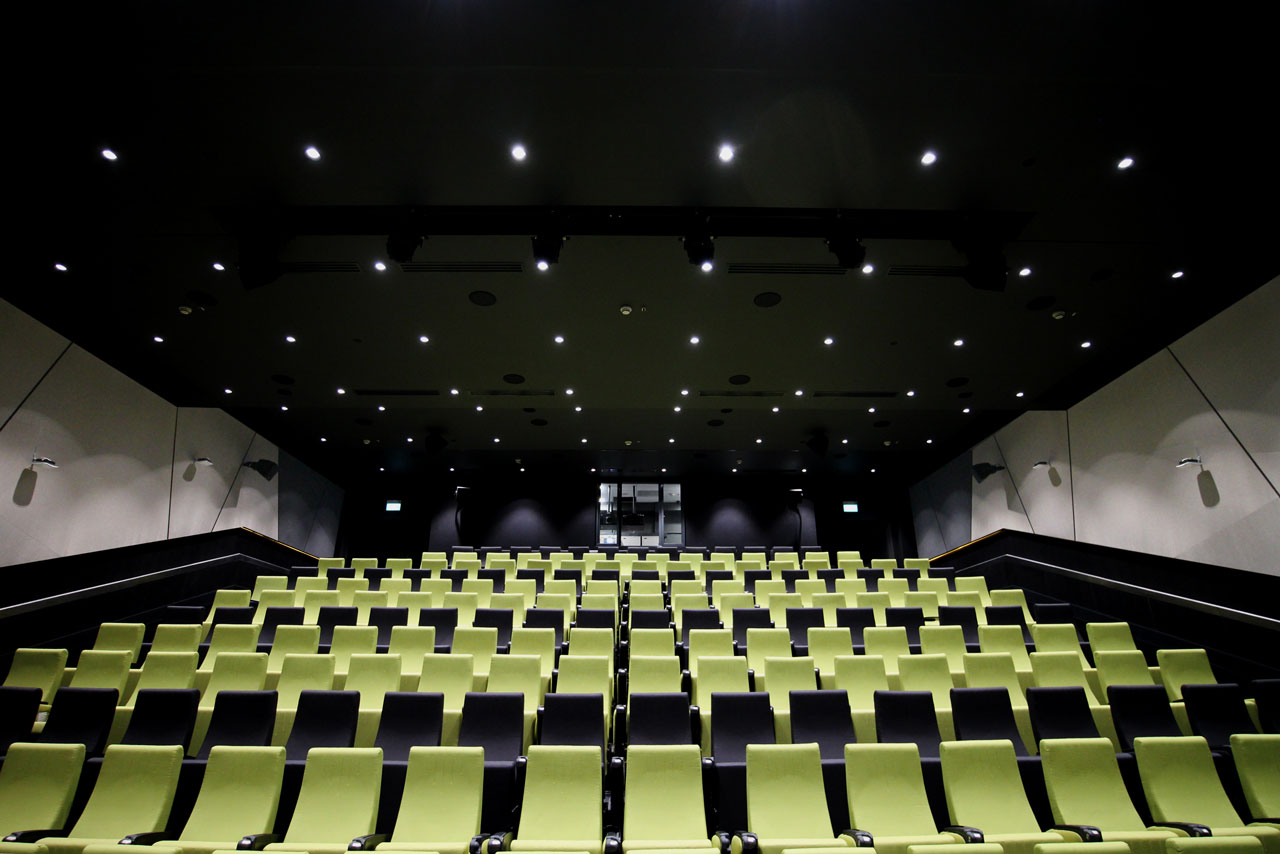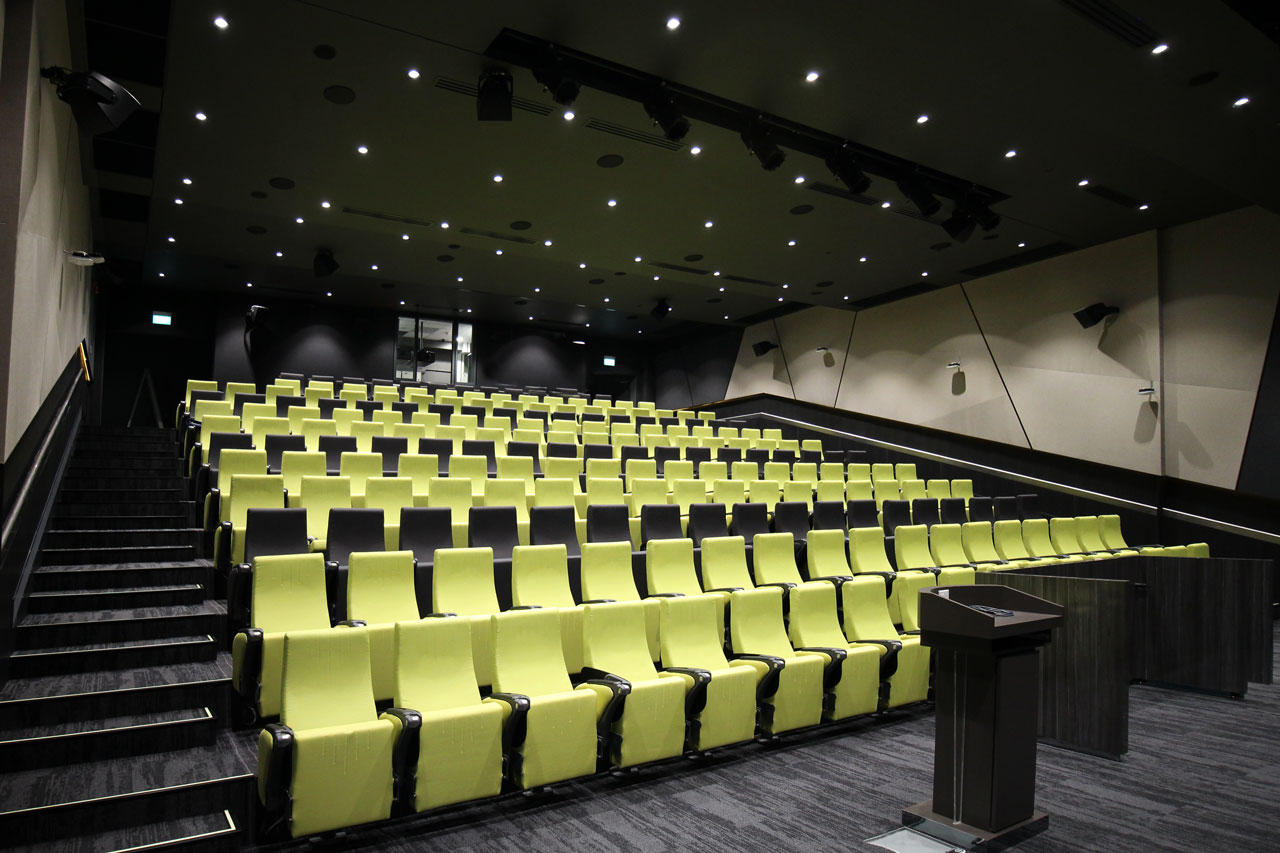Cradle to Cradle Certified™ Materials in Acoustic Fit-Outs

Building Better with Circular Materials
Acoustic fit-outs are no longer just about noise control—they’re part of a larger sustainability conversation. With growing emphasis on material health, reusability, and transparency, Cradle to Cradle Certified™ products are becoming central to acoustic design. These certifications signal not just environmental commitment, but also performance and safety aligned with evolving compliance needs.

Material Circularity in Interior Acoustic Design
Designing for the Circular Economy
Cradle to Cradle Certified™ materials are assessed across five categories: material health, product circularity, clean air and climate protection, water and soil stewardship, and social fairness. When applied to acoustic panels, this framework ensures that materials are not only low-VOC and Red List Free, but also designed to be recovered or repurposed after use. This allows interior spaces—such as offices, schools, and transit hubs—to support both acoustic comfort and lifecycle responsibility from the outset.
Closing the Loop in Fit-Out Specifications
Designers can now specify acoustic panels that are designed for circularity, meaning they can be safely disassembled, recycled, or upcycled at end-of-life. This reduces landfill dependency and contributes to LEED v4.1 credits under Material Reuse and Waste Reduction categories. By aligning product design with Cradle to Cradle principles, manufacturers also reduce risks associated with regulatory updates on toxic ingredients or material disposal restrictions.

Compliance and Green Building Integration
Streamlined Certification Across Frameworks
Cradle to Cradle Certified™ acoustic materials are increasingly accepted across multiple sustainability certification systems. These include WELL, LEED, BREEAM, and the Singapore Green Building Product (SGBP) scheme. With standardised documentation and third-party verification, Cradle to Cradle products help accelerate compliance reviews and submission processes—particularly in government or healthcare projects where audit trails are stringent.
BIM Integration for Compliance Tracking
When integrated into BIM workflows, Cradle to Cradle product data can be embedded in architectural models, providing real-time traceability during design and construction. This helps project teams maintain transparency on material origins, emission thresholds, and recyclability ratings while streamlining digital compliance submissions.

Enhancing Indoor Health Through Material Transparency
Low-VOC and Red List-Free Attributes
One of the core tenets of Cradle to Cradle is material health. Certified acoustic products are rigorously screened for carcinogens, VOCs, heavy metals, and persistent toxins. This ensures that interior fit-outs actively support occupant health by improving indoor air quality and removing known hazards. It’s a key consideration for schools, offices, and healthcare centres, where material exposure is continuous.
Transparency with Declare and EPDs
Many Cradle to Cradle Certified™ acoustic panels are also cross-listed with Declare labels and Environmental Product Declarations (EPDs), ensuring transparency across global standards. These tools allow designers to verify not only the environmental performance of a panel but also its ingredient-level breakdown—supporting documentation for LEED, WELL, and even municipal green procurement standards.
Acoustic Function Meets Circular Design
Sound Control Without Trade-Offs
Cradle to Cradle Certified™ panels do not sacrifice performance for sustainability. Many meet key metrics for NRC ratings and fire classifications such as EN 13501-1, while still adhering to circular economy principles. Designers can achieve the acoustic goals of any space—conference rooms, lobbies, or open-plan offices—while also meeting high benchmarks in sustainable design.
Long-Term Value and Material Reuse
Because these panels are designed with reuse in mind, they offer long-term material value beyond their first installation. In adaptive reuse projects or modular offices, panels can be relocated or repurposed, reducing both financial and environmental waste. This contributes to lower life-cycle costs and aligns with net-zero interior design strategies.

Toward a Circular Future for Interior Fit-Outs
Cradle to Cradle Certified™ acoustic materials represent a paradigm shift in how we approach sustainability in fit-outs. Rather than simply reducing harm, they promote continuous improvement and regeneration—meeting today’s regulatory demands while preparing for tomorrow’s circular economy.
With increasing availability and verifiable data, there’s no longer a need to choose between performance and sustainability. Cradle to Cradle Certified™ materials offer a pathway where responsible design, compliance, and acoustic performance meet.
References
- Cradle to Cradle Products Innovation Institute. (2024). Cradle to Cradle Certified® Product Standard.
International Living Future Institute. (2024). Declare: Ingredient Transparency for Building Products. Declare Database.
U.S. Green Building Council. (2023). LEED v4.1 Material Optimization Strategies. U.S. Green Building Council. https://www.usgbc.org
World Economic Forum. (2022). Circular Economy for Sustainable Interiors. World Economic Forum.
Building and Construction Authority (BCA). (2023). Green Mark 2023 Criteria – Non-Residential Buildings.
WELL Building Institute. (2023). The WELL Standard v2 – Materials and VOCs.
Share